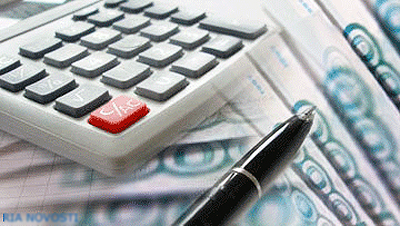Why is Russia borrowing money on the foreign markets?

The Russian Finance Ministry has issued 10-year Eurobonds worth $1.75 billion with an annual yield of 4.75 percent. What is Moscow hoping to achieve with the issue, who has lent money to Russia, and how likely are they to get their money back? These and other questions are answered here.
(Russia Beyond the Headlines – rbth.ru – ALEXEI LOSSAN, RBTH – May 20, 2016)
At the end of May 2016 the Russian Finance Ministry issued 10-year Eurobonds worth $1.75 billion with an annual yield of 4.75 percent. This is Russia’s first sortie into foreign markets after the introduction of sanctions against Moscow in 2014.
Nevertheless, according to the Finance Ministry, almost 70 percent of the bonds have been acquired by foreign investors, mainly from the UK, the Asian countries and the U.S., reports the Russian news agency RIA Novosti.
Why did Russia need the money?
The Russian budget is drafted based on the $50-a-barrel price of Brent crude, but for most of the first six months of 2016 the price of hydrocarbons was below this mark. With an average price of $40 a barrel the Ministry of Economic Development estimated that the country’s budget deficit will be 4 percent of its GDP. The ministry plans to reduce the deficit to 3 percent of GDP, a target that can also be realized by selling shares in the state-owned oil company Rosneft.
This led to government officials talking about attracting money from the open market.
But according to Deputy Finance Minister Sergei Storchak, the issuance of Eurobonds is not aimed directly at financing the budget deficit. In his words, the main objective for Russia is to “show its flag,” to show that it is present on the international capital market.
Has Russia done this before?
The last time Russia entered the international capital market was before the sanctions. In September 2013 the Finance Ministry borrowed bonds worth $6 billion, which will mature in 2019, 2023 and 2043.
Will the sanctions impede potential buyers?
In order to safeguard potential buyers from the sanctions against Russia, the organization of the bond issue was carried out only by VTB Capital, the investment arm of Russia’s VTB Group, and the bonds will be serviced by the National Settlement Depository in Moscow. If the U.S. government blocks payment in dollars, Russia will use alternative currencies.
Moreover, unlike in 2013, this time the issue of the bonds was done rapidly. Applications were collected in two days and the deal was sealed in one week. Russia did not conduct any type of roadshow during the process.
“The issuance of Russian sovereign Eurobonds took place in an accelerated fashion in order to avoid potential negative measures from foreign institutions,” said Andrei Solovyov, director of loan capital markets at VTB Capital, which issued the bonds.
Who lent money to Russia and how much?
A total of $1.75 billion worth of Eurobonds was sold with a demand for $7 billion. Foreign investors bought bonds amounting to $1.2 billion and private Russian banks purchased the remaining share ($550 million). VTB Capital told RBTH that among the foreign buyers most investors were from the UK, followed by representatives of continental Europe, then Asia and finally the U.S.
Furthermore, the Finance Ministry purposely limited the number of Russian buyers. From the very beginning the Russian government intended to have Russian investors purchase no more than 30 percent of the bonds and to concentrate on attracting foreign players.
According to the budget law, in 2016 the Finance Ministry can borrow up to $3 billion on the foreign markets. However, on this occasion the ministry decided not to issue the entire amount due to the high yield. But the ministry does not rule out that it will sell the remaining $1.25 billion by the end of this year.
How much can you earn from Russia?
The yield of the 10-year bonds is 4.75 percent annually, which is quite high.
“We issued the bonds in conditions of geopolitical instability, meaning that investors wanted a high premium for their risks. We must also keep in mind that in the last few months the profitability of Russian Eurobonds has been reduced and now they are trading at the 2013 level. In order to attract investors to the new issue, we had to give them a nice premium,” explained Solovyov.
Does Russia return its debts?
Russia, just like the USSR, has always been distinguished by its repayment discipline. At the beginning of the 1990s the Russian Federation accepted all the USSR’s debts in exchange for the former Soviet republics’ renunciation of their shares of the Soviet Union’s foreign assets, and in the 2000s paid back nearly all its loans.
In 2000 Russia’s national debt was $158.7 billion, in 2004 it was $121.7 billion and by 2008 it was just $44.9 billion. This means that in eight years the country paid off more than $100 billion. For example, in 2006 Russia paid back all its debts to the Paris Club ahead of schedule, transferring $21.6 billion, including $1 billion as a fee for unpaid future interest.
As of January 2016 the total national debt and the debt of all Russian companies was $515 billion, out of which the Finance Ministry is responsible for $31 billion.
[Article also appeared at rbth.com/business/2016/05/30/why-is-russia-borrowing-money-on-the-foreign-markets_598703]
